One of the roles of the Arkansas Division of Emergency Management (ADEM) is to act as our state’s Homeland Security Agency. To fulfill those responsibilities ADEM has created a Critical Infrastructure Protection Branch. Critical Infrastructure is defined as: The basic systems necessary for survival of an organization or nation. The U.S. Government states that the country’s critical infrastructure is the “infrastructure and assets vital to national security, governance, public health and safety, economy and public confidence.” According to the United States Department of Homeland Security, the following subjects make up our critical infrastructure:

- Chemical Storage and Manufacturing
- Commercial Facilities
- Communications
- Critical Manufacturing
- Dams
- Defense Industrial Base
- Emergency Services
- Energy
- Financial Services
- Food and Agriculture
- Government Facilities
- Healthcare and Public Health
- Information Technology
- Nuclear reactors, Materials and Waste
- Transportation Systems
- Water and Wastewater
Citizens of our state are encouraged to assist in the protection of our state and our state’s critical infrastructure. The most effective way to help is to report suspicious activity. Suspicious activity can be defined as: Observed activity and/ or behavior that is believed to be indicative
of intelligence gathering that may be related to terrorism, criminal, or other illicit/illegal
activity. Suspicious activity is unexpected, such a person visiting or working in an area
where work is not generally performed. Persons wearing clothing not consistent with
weather conditions (a person wearing a full length trench coat with boots in 70 degree
weather is another example; this variable is the first and most obvious indicator of
suspicion.
Some examples of suspicious activity may include, but are not limited to:
- Eliciting Information
- Testing of Security
- Recruiting
- Photography
- Observation/ Surveillance
- Materials Acquisition/ Storage
- Acquisition of Expertise
- Weapons Discovery
- Sector – Specific Incident
- Breach/ Attempted Intrusion
- Misrepresentation
- Theft/Loss/Diversion
- Sabotage/ Tampering/ Vandalism
- Cyber attack
- Expressed or Implied Threat
- Aviation Activity
There are also activities that may be indicators of a criminal or terrorist act. These
activities may take place at or near government or military facilities. They may also take
place at high profile sites, or places where large numbers of people congregate.
Some indicators of suspicious activity include:
- Persons who provide false identification or documents;
- The theft of official equipment, badges/ uniforms, technology, or documents from
a facility; - Damaging or sabotaging a facility or infrastructure;
- Attempting to disrupt or unlawfully access the Department’s information
technology infrastructure (cyber attack); - Threatening (either orally or in writing) to damage a facility or infrastructure;
- Operating an aircraft in a manner that reasonably may be interpreted as
suspicious, or posing a threat to people or property; - Attempting to enter, or entering, a restricted area without authorization, and
attempting to impersonate authorized personnel.
Suspicious activity should be reported to local law enforcement or the Arkansas State Fusion Center at arfusioncenter@asp.arkansas.gov.
When reporting suspicious activity, give the most accurate description possible of the
situation, including:
- The date, time, and location of the activity;
- A brief description of the activity (who, what, when, where, and how);
- Physical identifiers of the person(s) involved (height, hair color, etc); and
- Descriptions of any vehicle (make, model, license plate number, etc).


